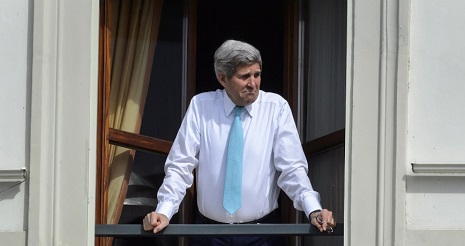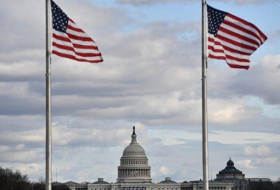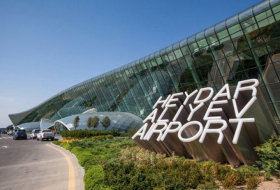The Top 5 Things to Know About the Iran Nukes Deal

But Kerry’s long face was apparently too pessimistic, and on Thursday, April 2, world powers unveiled an interim agreement — a joint comprehensive plan of action, to use its technical term — that paves the way for a final deal that would see Iran suspend enrichment and open itself to inspections in exchange for sanctions relief.
The terms of the interim agreement are bound to be picked over in coming days, but the information that has so far been released provides a surprisingly comprehensive picture of what we can expect from a final agreement.
Here, then, is a guide to the agreement struck in Switzerland, the outstanding issues to be resolved, and potential pitfalls in its implementation. (But first, a caveat: Iran and its interlocutors haven’t actually signed an agreement yet. The terms described below are based on how the deal has been described by officials involved in the negotiations. This agreement could very well be ripped up and tossed out. That appears unlikely, but don’t consider what emerged in Lausanne on Thursday as an agreement set in stone.)
Centrifuges
Arguably the most difficult step in building a nuclear bomb is amassing the fissile material — uranium or plutonium — that gives such a device its explosive power. In Iran’s case, the enrichment of uranium is the key component to any agreement over its nuclear program. Building a bomb using uranium requires the extraction of the uranium-235 isotope, which makes up 0.7 percent of the uranium that exists in nature. To make weapons-grade uranium, the material must be enriched to 90 percent uranium-235.
The agreement unveiled on Thursday allows Iran to continue some of its enrichment activities but imposes strong limits on those efforts. Iran will be required to reduce its number of installed centrifuges by two-thirds to about 6,000. Of those, 5,060 will be allowed to operate during the next 10 years.
These centrifuges will only be Iran’s most basic model, the IR-1. Iran will not be allowed to enrich uranium using its more advanced models — which produce the stuff faster — for at least 10 years.
Breakout time
The question of the quantity of centrifuges is intimately connected with what diplomats call Iran’s possible “breakout time.” That is, if Iran decides to break out of an agreement governing its nuclear program, how long would it take Tehran to accumulate a sufficient amount of bomb-grade uranium — uranium that has been enriched to 90 percent — to make one nuclear weapon.
Estimating breakout time can sometimes be more art than science, but the terms of the deal appear to put the breakout time at about a year.
One way to speed up the production of bomb-grade uranium is to feed gas centrifuges with uranium that has already been modestly enriched. Under the terms of the agreement, Iran will be required to massively reduce its stockpile of low-enriched uranium from about 10,000 kg to a mere 300 kg. Moreover, the deal requires Iran to not enrich uranium beyond 3.67 percent for the next 15 years.
In 15 years, however, that calculation will change, when many of the restrictions on Iran’s enrichment activities will expire, according to the agreement.
Still, when discussing Iran’s possible breakout time, it’s important to emphasize that there are three main component to the production of nuclear weapons — enrichment of fissile material, the development of a bomb, and the creation of a delivery system. The breakout time refers only to the accumulation of fissile material, and it is not currently believed that Iran has developed the technology bomb nor for an appropriate delivery mechanism.
Nonetheless, discussion of Iran’s breakout time under the terms of this deal is sure to be a point of contention in coming weeks as diplomats try to sell the agreement to skeptical publics at home. Hardliners such as Israeli Prime Minister Benjamin Netanyahu have demanded that Iran’s enrichment infrastructure be entirely dismantled, which this agreement does not do. In coming days and weeks, expect him and his allies to argue that Iran will be allowed to quickly accumulate nuclear material for a bomb.
Fordow, Natanz, and Arak
If Iran ever decides to clandestinely pursue a nuclear weapon, its facility at Fordow will be key. Buried underneath a mountain to protect it from air strikes, Fordow is currently home to thousands of centrifuges. But per the terms of the Lausanne agreement, Iran has agreed not to carry out any enrichment activities at the site for 15 years. It will instead repurpose it as a nuclear, physics, and technology research center. During that time period, the site will not be home to any fissile material.
For Iran’s interlocutors — the so-called P5+1: the United States, France, the United Kingdom, Russia, China, and Germany — the changes at Fordow represent a significant victory, one that hampers Iran’s path to a bomb.
At the same time, however, Iran will be allowed to keep some centrifuges at Fordow, though they will not enrich uranium. Speaking to reporters in Lausanne, Iranian Foreign Minister Javad Zarif highlighted this fact as a victory his delegation was able to secure at the negotiating table.
The information that has so far been released about the agreement does not include a great deal of specificity about the centrifuges at Fordow, and this caused Scott Kemp, a nuclear expert at the Massachusetts Institute of Technology, to question estimates about Iran’s possible breakout time under the agreement.
“Although the U.S. fact-sheet indicates that no uranium is allowed at Fordow, centrifuges are allowed and those centrifuges must be included in the calculation of breakout times,” Kemp wrote in an email to Foreign Policy. “The U.S.-released text suggests a maximum of about 1,000 centrifuges will be allowed at Fordow, and does not specify restrictions on the centrifuge models installed there. Assuming Iran’s current best technology is used, Fordow centrifuges could reduce breakout time to about three months.”
Iran’s other key site for enriching uranium lies at Natanz, and with Fordow no longer working with fissile material, Iran’s enrichment activities will only take place at Natanz. Five thousand centrifuges will be allowed to run, a restriction that will be place for ten years. At Natanz, Iran will only be allowed to use its most basic centrifuge model, though it can engage in “limited research and development with its advanced centrifuges,” according to a State Department fact sheet.
While Iran’s nuclear program has focused on uranium enrichment, some observers fear that it could use its heavy water reactor being built at Arak to produce plutonium, another possible bomb fuel. Under the terms of the agreement, Arak will be redesigned so that it can no longer produce weapons grade plutonium. The reactor’s current core will either be destroyed or sent out of the country. Spent fuel from the reactor, which could be used to make nuclear weapons, will be shipped out of the country as long as the reactor is running.
Iran has pledged to build no new enrichment facilities or reactors.
Inspections
All of these restrictions on Iran’s nuclear program would be meaningless if the international community lacks the ability to monitor its compliance. With that in mind, the agreement sets up an aggressive inspections regime. The agreement provides the International Atomic Energy Agency access to all of Iran’s nuclear sites, including the supply chain and any sites deemed suspicious. The agency will be able to carry out surveillance at Iran’s uranium mines and mills for 25 years, at its centrifuge production sites for 20 years. Iran has agreed to sign the IAEA’s additional protocols, which provide the agency with additional inspection authorities.
But when it comes the ability of inspectors to detect covert activity, there’s also reason for caution. As Olli Heinonen, a former IAEA official, wrote last week: “History shows surprises.”
“The Russian centrifuge program went for years without detection despite tremendous intelligence efforts,” Heinonen wrote. “The Iraqi and Libyan programs were not immediately detected, and South Africa, which manufactured nuclear weapons, ended up destroying its program before the IAEA saw it. The Syrian reactor in al-Kibar also came a bit out of the blue, as did North Korea’s advanced centrifuge plant.”
“There is always the element of the unknown or the uncertain that adds to the risk equation.”
For their part, the American intelligence community claims it is confident in its ability to detect a covert effort by Iran to obtain a nuclear weapon.
Even as Iran has agreed to wide-ranging limits on its nuclear program, many questions remain about its past work on developing nuclear weapons. According to a vaguely worded section of the State Department fact sheet, Iran will “implement an agreed set of measures to address the IAEA’s concerns” about the possible military dimensions of its nuclear program.”
That phrasing leaves it unclear whether Iran will come clean on such work, but it certainly indicates that it’s a possibility. American spies believe that Iran abandoned its ambitions to build a nuclear bomb in 2003.
The pace of sanctions relief
If Iran complies the terms of this agreement, it will experience wide-ranging sanctions relief. The United States and the European Union will suspend such measures upon verification by the IAEA that Iran has fulfilled its “key” nuclear-related obligations. What constitutes a “key” obligation has not been entirely specified, and is likely a point of contention.
Upon IAEA verification, the U.N. Security Council will pass a fresh resolution lifting all past resolutions on the issue of Iran’s nuclear program. That new resolution will likely include restrictions on conventional arms and ballistic missiles, asset freezes, cargo inspections, and other provisions to encourage transparency in Iran’s nuclear activities.
The United States will keep in place sanctions on Iran related to its human rights record, support of terrorist groups, and missile development.















































